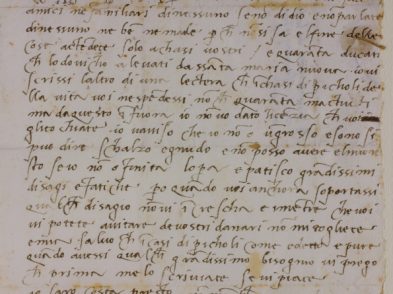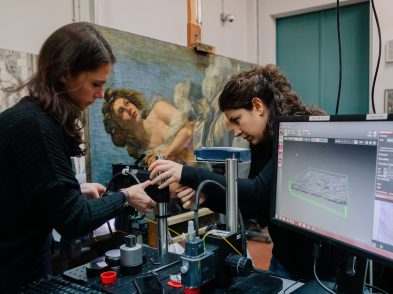At Florence’s Biblioteca Nazionale Centrale, there is a hall dedicated to Dante that scholar Natacha Fabbri calls “an ideal temple of Astronomy”. In her mind, this lofty vaulted room is the perfect place for a show she is co-curating that takes us to the stars and back—from a female perspective. Women of the Sky: From Muses to Scientists deserves seven interviews to cover each one of its “stellar” sections, of which I will list only three: ‘Recondite Harmonies. Muses, Sirens and World Machines’, ‘Dignity and Prejudice. Astronomy for Everyone’, ‘Women of Science. From Astronomy for Ladies to Women Astronomers’.
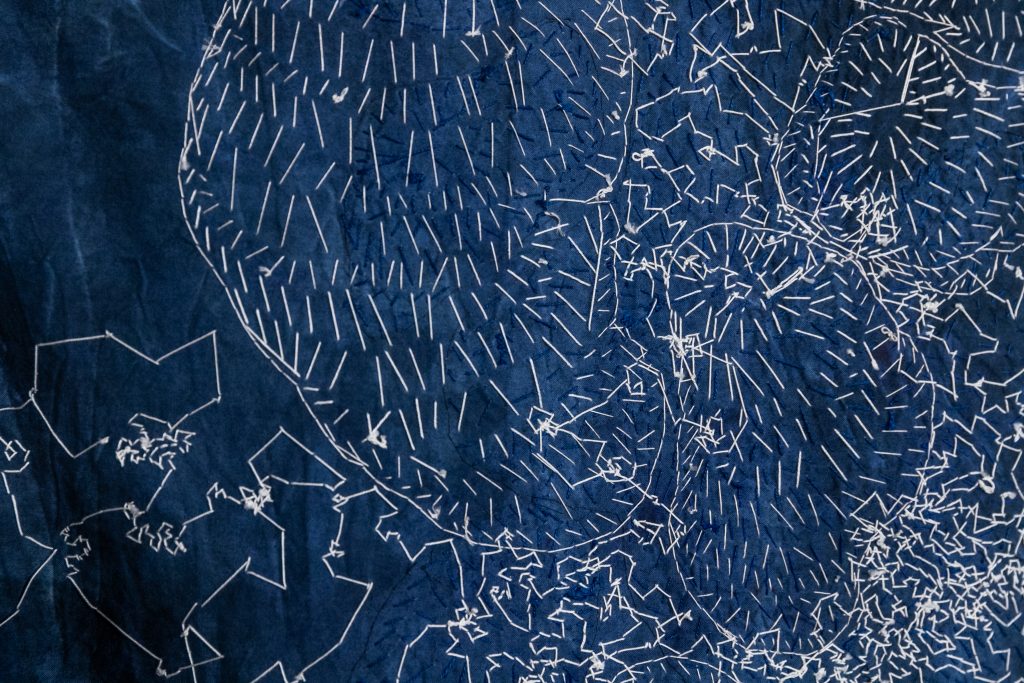
Organized by Museo Galileo and the National Central Library, the show will run from March 8 to June 8, but it was conceived three years ago with a meeting of (female) minds. Not long after Natacha sent her book Profiles of Women on the Moon to press, she met contemporary textile artist Ilaria Margutti, who, at the time, had just finished an artwork in which she reproduced calculations made by Henrietta Swan Leavitt (1868–1921) using the astronomer’s photographic glass plates. “Margutti has transferred these difficult calculations onto canvas,” Natacha explains. “She embroiders the brightness of the Cepheid stars using a traditionally female craft, which requires the same patience and perseverance—the same silent dedication—that characterized Leavitt and the more than 250 female human computers working at Harvard from 1875 until the 1920s.”
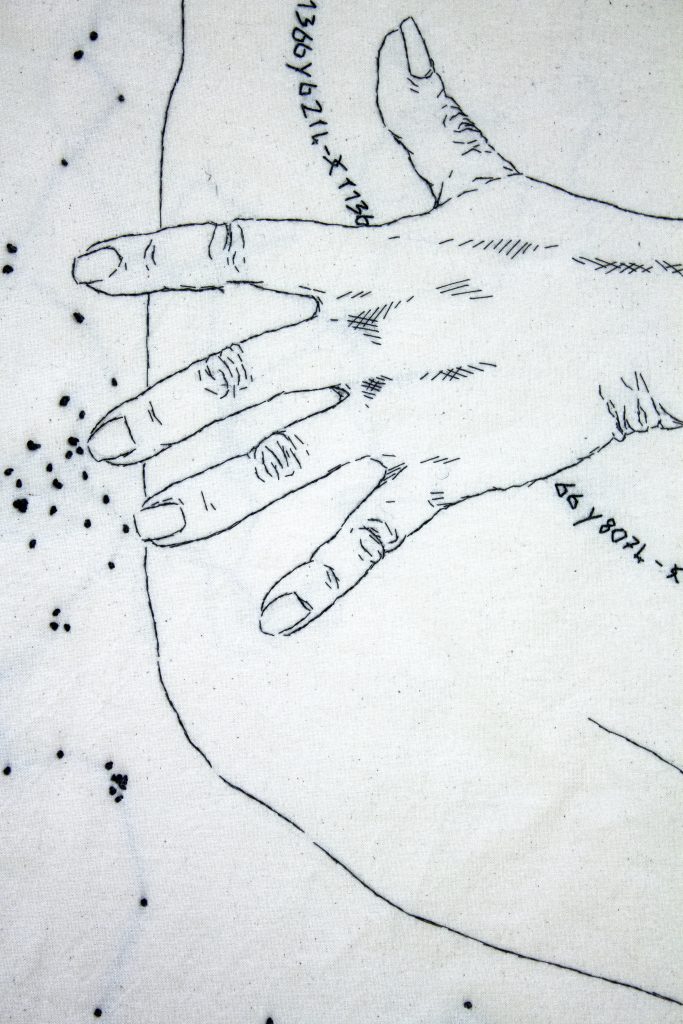
Natacha is referring to a brilliant group of women known by their contemporaries as “Pickering’s Harem”, hired to work at the Harvard Observatory not long after US astronomer and physicist Charles Edward Pickering commented that his “Scotch maid” could make more precise calculations than the men on his team. In Pickering’s world, women were cheaper to employ and better suited for interminable, high-concentration calculations. Of course, their findings could also be published in his own name, as in the case of Leavitt herself, who was cited as having “prepared” data, but not credited for making her discovery, which enabled scientists to measure the distance of a particular star from Earth accurately, based on its brightness.
As for Pickering’s maid, Williamina Paton Fleming, he was right. He trained her to analyze stellar spectra from 1881 onwards and, among other things, she went on to discover the first white dwarf. “These women were paid a pittance and considered manual labourers, not great scientists,” says Natacha. “But artist Ilaria Margutti has taken the calculations Henrietta Leavitt recorded between 1904 and 1908, and reproduced her Magellanic Cloud coordinates, comprised of 1,777 variables.”
Natacha tries to simplify for the non-scientific mind. “Leavitt calculated proportionality between the period and luminosity of the Cepheid stars. In other words, her discoveries were foundational for the development of Hubble’s theories, proving that the Universe is in a state of constant expansion.”
“When I met her, Ilaria had one canvas completed, so we [Museo Galileo] approached the Biblioteca Nazionale with the idea of an astronomy-by-women exhibition, based largely on their books, cartographic works and manuscripts, including several linked to Galileo, whose manoscritti the library holds,” Natacha continues. “The BNC loved the idea and co-curators Caterina Guiducci and Simona Mammana came on board. There are several highlights, like a handwritten letter to Galileo by writer Margherita Sarrocchi (1560–1617), who defended Galileo’s theories to her upper-echelon network after the Pisan scientist visited her salon in 1611.”
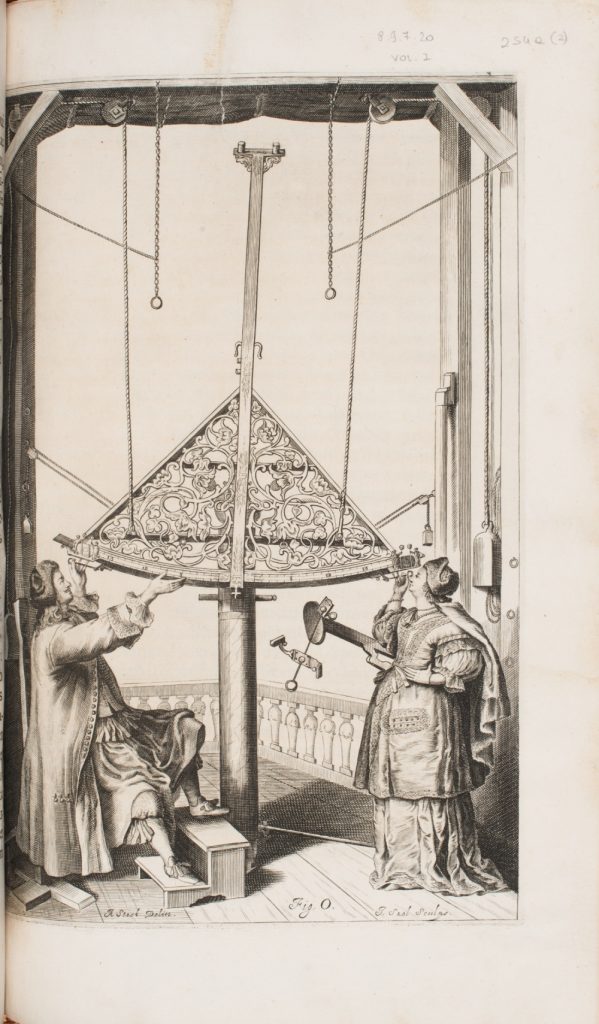
Margherita Sarrocchi was a Neapolitan author who wrote Scanderbeide, the first heroic epic by a woman. Perhaps she was called a “rare monster” by a fellow poet due to her ability to depict action-packed war scenes and, in Natacha’s view, for having been one of the first women to look through Galileo’s telescope, which philosophers frequenting her salon refused to do, claiming it an instrument that distorted reality.
How many other women inspirers and initiators of the science of the skies will this exhibition unveil, I wonder? Judging from this first interview, Women of the Sky – Donne del Cielo sounds heavenly. Those looking to read more about Leavett, Sarrocchi and the other women of the BNC and Museo Galileo constellation should seek out the May 1 online issue of Restoration Conversations, The Florentine’s partner publication, supported by Calliope Arts, a not-for-profit foundation in Florence and London, dedicated to exploring women’s achievements, past and present, in various fields. Calliope Arts is a donor of the Women of the Sky project and exhibition, on show from March 8 to June 8 at the Biblioteca Nazionale.



